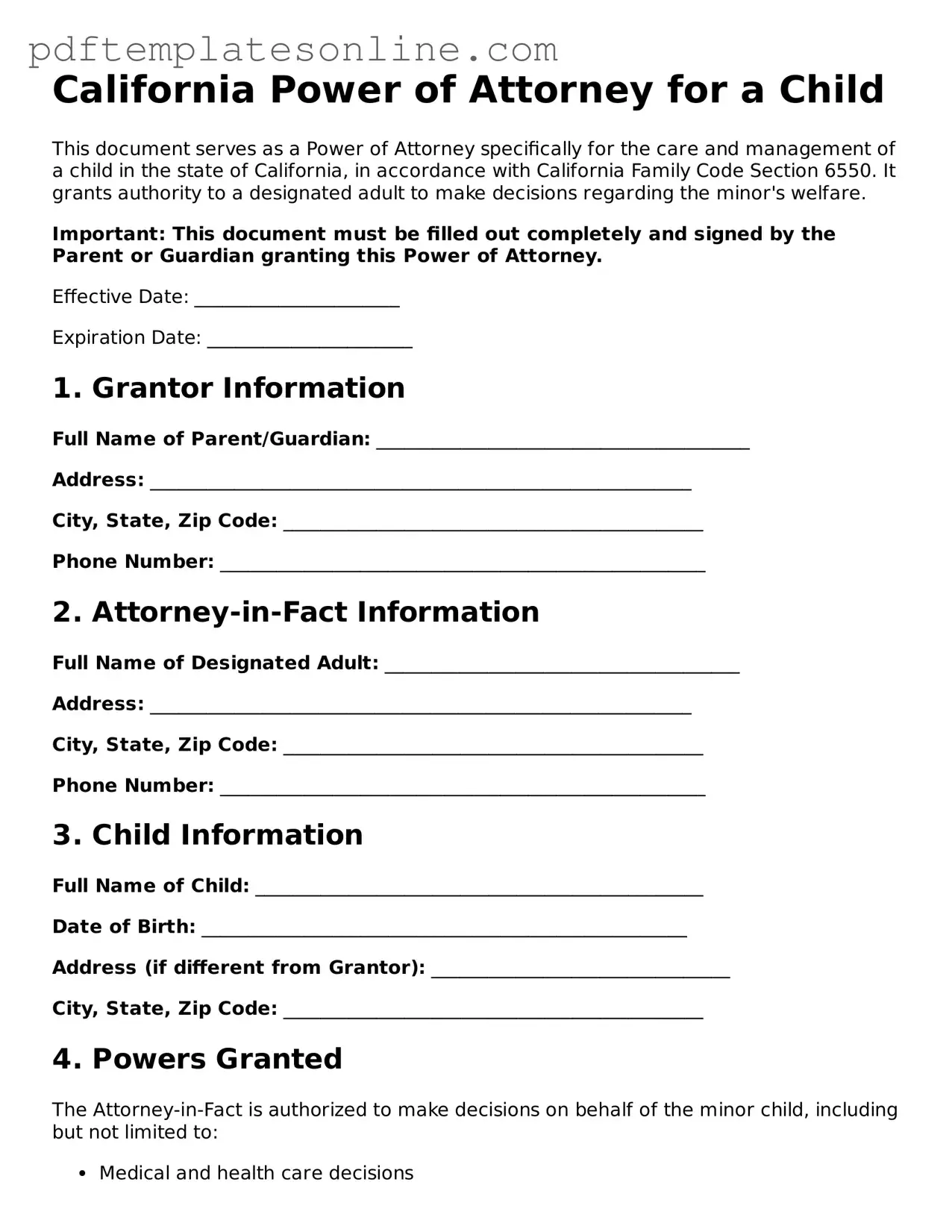Filling out the California Power of Attorney for a Child form can be a daunting task. Many people make mistakes that could lead to complications in the future. One common error is failing to include all required information. This form requires specific details about both the child and the agent. Omitting any crucial information may result in the form being rejected or not being honored when needed.
Another mistake often made is not properly signing the document. The Power of Attorney must be signed by the parent or legal guardian, and in some cases, a witness may also be required. If the signature is missing or not executed correctly, the document may not be valid. It's essential to ensure that all signatures are present and legible.
Many individuals overlook the importance of specifying the powers granted to the agent. The form allows for a range of powers, from making medical decisions to handling educational matters. If the powers are too vague or not clearly defined, the agent may not be able to act effectively on behalf of the child.
Additionally, people sometimes fail to update the form when circumstances change. For instance, if the agent becomes unavailable or if the family situation changes, it is crucial to revise the Power of Attorney accordingly. Neglecting to make these updates can lead to confusion and potential legal issues.
Another frequent oversight involves not including an expiration date for the Power of Attorney. Without a specified end date, the authority granted may continue indefinitely, which can create complications down the line. Setting a clear timeframe helps to ensure that the arrangement is temporary and manageable.
Some individuals also forget to provide contact information for the agent. This detail is vital, as it allows other parties to reach the agent when necessary. Including a phone number and email address can facilitate communication and ensure that decisions can be made promptly.
Moreover, it’s not uncommon for people to assume that the Power of Attorney for a Child form is a one-size-fits-all document. Each family situation is unique, and it’s important to tailor the form to reflect specific needs and circumstances. Ignoring this can lead to misunderstandings and challenges in the future.
Lastly, many individuals do not seek guidance or clarification when needed. If there is any uncertainty about how to fill out the form or what certain sections mean, it is wise to ask for help. Taking the time to ensure that everything is completed correctly can save a great deal of trouble later on.
